ALBONI:1750. Brandard, J. ‘BUY MY ORANGES! (Dolci
Frutta, Aranci Elleti)’. Full length portrait of Marietta Alboni in costume. Sheet music cover with aria in English & Italian provided. Printed by M. & N. Hanhart and published in London by Charles Jefferys ca. 1850 [26497] Uncoloured lithograph by John
Brandard, 28 x 20 cm. £90
|
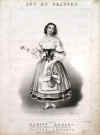 |
ARNE:1752. Dunkarton, R. ‘DR. ARNE’. Head and shoulders portrait of Dr. Arne, in oval form, engraved by W. Humphrey. W. Richardson, The Strand ca. 1790 [24739] Uncoloured mezzotint, 33 x 28 cm. Some restoration to edges of engraving just outside the
platemark, but still an attractive item. £120
Thomas Augustine Arne (1710-78) was born in the Covent Garden area of London. Between 1733 and 1776, Arne wrote music for about 90 stage works, including plays, masques, pantomimes, and opera. Many of his dramatic scores are now lost, probably in the disastrous fire at Covent Garden in 1808. |
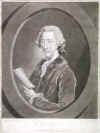 |
|
ARTOT:1753. Bloch, E. ‘DESIREE ARTOT’ as Rosina in Il barbiere di
Siviglia. Opera in three acts from Gioacchino Rossini. Berlin, Eduard Bloch ca. 1860 [24327] Full coloured lithograph, 12 x 15 cm. £90
Marguerite-Joséphine-Désirée Montagney Artôt (1835-1907), Belgian mezzo-soprano, member of a famous family of musicians. Acclaimed in France as an opera singer, she married the Spanish baritone Mariano Padilla y Ramos (1842–1906) while briefly engaged to
Tchaikovsky. Her daughter Lola Artôt de Padilla (1885–1933), a soprano whom she trained, became a prima donna with the Royal Opera, Berlin.
|
 |
|
AUBER:1754. Brandard, J. ‘FRA DIAVOLA’. An opera in three acts by ‘Auber’ - text by ‘Scribe’. First produced in Paris in 1830 with
Boulanger, Prevost, Chollet, Fereol and Moreau-Santi. M. & N. Hanhart ca. 1858 [24006] Each 30 x 24 cm. Two lithographs in vibrant original colour by John Brandard from a photo by Herbert Watkins, most probably inspired by the first performance in Italian at the Lyceum Theatre, London in 1857. Zerlina was played by the then famous soprano Angiolina Bosio and the title role by Italo
Gardoni. Fra Diavolo’s two robber companions were sung by Zalgar and
Taglianco. The set of two lithographs £320
Daniel François Esprit Auber (1782-1871) was a French composer. Fra
Diavolo, was his most successful opera. |
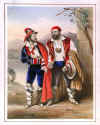
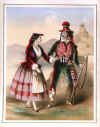 |
|
BAGPIPES:1756. Hipkins. ‘BAGPIPES’. Four illustrations drawn from Bagpipes originally belonging to Messrs J. & R. Glen, Edinburgh. A large bagpipe with a green bag is the ‘Lowland Scotch’, The Northumbrian Bagpipe with a blue bag, and two others. Chromolithograph with accompanying sheet of text, published by Hipkins 1888 [24245] Full
colour, 32 x 21 cm. £60
|
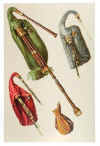 |
BASS VIOLA:1757. Zampieri, D. ‘SIBYLLA CUMAEA’. Lady with Bass Viola. Copper engraving by Antonio Perfetti after Domenico Zampieri 1828 [19763] 36 x 28 cm. Excellent condition. £150
Domenico Zampieri (1581-1641), Italian Baroque painter. |
 |
|
BEETHOVEN:1758. Gräfle, A. ‘DIE INTIMEN BEI BEETHOVEN’. Beethoven playing the piano whilst Anton Schindler, Sigmund Anton Steiner, Abbe Stadler and Gottfriede van Swieten listen intently to the music. After Albert Gräfle printed by Franz Hanfstaengl, München ca 1892 [25926] Large
heliogravure, 41 x 52 cm. Proof before letters. Excellent condition. £250
Ludwig van Beethoven (1770-1827), German composer, pianist, teacher and publisher. - Albert Gräfle (1807-89), German genre painter. |
 |
|
BETZ:1759. Bloch, E. ‘FRANZ BETZ’ as Wolfram von Eschenbach in the opera Tannhäuser. An opera in three acts from Richard Wagner. Berlin, Eduard Bloch ca. 1860 [24321] Full coloured lithograph, 12 x 15 cm. £125
Franz Betz (1835-1900) was a German bass-baritone opera singer who sang at the Berlin State Opera from 1859 to 1897. He was particularly known for his performances in operas by Richard Wagner and created the role of Hans Sachs in Die Meistersinger von Nürnberg.
|
 |
|
BUCKINGHAM PALACE:1763. Anonymous. ‘BUCKINGHAM PALACE. WEDNESDAY EVENING 23rd JUNE 1886’. A concert programme with decorative lacepaper border and superb Royal coat of arms and in addition two emblems in red, gold and silver. Singers included Adelina Patti, Zelia
Trebelli, Emma Albani and Mr Charles Santley. London 1886 [26729] 25 x 20 cm. £75
|
 |
CELLO:1765. Vanity Fair. ‘A WANDERING MINSTREL’. Lord Gerald Fitzgerald. Vincent Day Brooks & Sons 1883 [24262] Chromolithograph, 33 x 19 cm. £60
The ‘WANDERING MINSTRELS’ was an amateur orchestral society, founded in 1860. In 1873 Lord Gerald Fitzgerald became the second president and conductor and remained in this post until 1881. The meetings of the society for the first twenty years took place at Lord Gerald Fitzgerald's house, to which he added a concert room with orchestra for the exclusive use of the Society. |
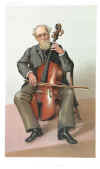 |
|
CHARPENTIER:1766. Rochegrosse, G. ‘LOUISE DE GUSTAVE
CHARPENTIER’. Original lithograph for the world premiere in Paris of the musical romance in 4 acts and 5 scenes by Gustave
Charpentier. Designed by Georges Rochegrosse and printed for the "Les Maitre de L'Affiches" series. Published by M. M. Heugel in Paris 1900 [26641] 28 x 21 cm. Full colour lithograph. Excellent condition. £280
Marc-Antoine Charpentier (1650-1704), French composer. - Georges Antoine Rochegrosse (1859-1938), French painter, illustrator and lithographer. |
 |
|
CLARINET:1767. Nicol, E. ‘THE TRIO’. Three gentlemen playing violin, flute and clarinet, from a painting by Erskine Nicol (1825-1904). Cassell, ca. 1880 [26704] Uncoloured etching, 19 x 15 cm. £100
|
 |
DE CARRION:1768. Bloch, E. ‘MANUEL DE CARRION’ as Edgardo in Lucia di
Lammermoor, an opera in three acts by Donizetti. Berlin, Eduard Bloch ca. 1860 [24322] Full coloured lithograph, 12 x 15 cm. £90
|
 |
DE RESZKE:1769. Vanity Fair. ‘POLISH TENOR’. Full length portrait of the renowned operatic tenor, Jean de
Reszke, in costume. Vincent Brooks Day & Sons 1891 [24000] Chromolithograph, 32 x 19 cm. £60
Jean de
Reszke, born Jan Mieczyslaw (1850-1925) was a Polish tenor. He enjoyed international renown for the quality of his singing and the elegance of his bearing and he became the biggest male opera star of the late 19th century. |
 |
|
DRESDEN:1770. Kolb, J. M. ‘DRESDEN - DAS THEATERGEBÄUDE’. The ‘Semper’ Opera House in Dresden. Engraved by J. M. Kolb and published by G. G. Lange ca. 1850 [24115] Uncoloured steel engraving, 11 x 17 cm. £60
The Semper Opera was built in 1841 by the German architect Gottfried
Semper. It is situated at the Theater Square in the heart of Dresden. The portal of the Semper Opera depicts famous artists such as Johann Wolfgang von Goethe, Friedrich Schiller, William Shakespeare, Molière, and Euripides. The Semper Opera was completely destroyed by Allied bombing in 1945. After extensive reconstruction, the Opera reopened in 1985 - with the same piece that was performed last before the destruction: Weber's opera "Der Freischütz". |
 |
|
DUPREZ:1771. Lacauchie, A. ‘DUPREZ’. Full length image of the singer in costume. From Galerie des Artistes Dramatiques de Paris. Paris ca. 1840 [24289] Uncoloured lithograph by Rigo
Freres, 25 x 16 cm. £100
Gilbert Duprez (1806-96), French tenor, teacher of voice, and composer. Duprez studied at the Paris Conservatory. In 1825 he made his debut at the Odéon Theatre, Paris, as Almaviva in Gioacchino Rossini’s Il barbiere di Siviglia (The Barber of Seville). After limited success at the Odéon, he went to Italy for further study and achieved considerable popularity, notably in Naples, where Gaetano Donizetti chose him for the role of Edgardo in the premiere of his Lucia di Lammermoor in 1835.
|
 |
|
FEREOL:1772. Noel, F. ‘FEREOL, ARTISTE DU THEATRE ROYAL DE L’OPERA
COMIQUE’. Full length portrait in costume in the role of Charlot from the opera Le Solitaire. Paris ca. 1820 [26619] 30 x 21 cm. Uncoloured lithograph by F. Noel. £90
|
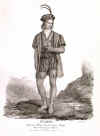 |
FLOTOW:1773. Flotow, F. von. ‘MARTHA’. An opera in four acts by Friedrich von
Flotow. This lithograph depicts the four main characters on stage, in the ‘Spinning Scene’. The first production was in Vienna, 1847. The first London performance was on the 4th July 1849. M. & N. Hanhart ca. 1858 [24005] Lithograph, 25 x 20 cm. Recent
hand-colouring. £240
Friedrich von Flotow was a German (born in 1812, the son of a landed nobleman), and he has been classed with composers of the German romantic school. He established himself in Paris in 1827, and one opera produced there, in 1839, ran for fifty-three nights in twelve months. From 1856 to 1863 he was intendant of the Court Theatre at
Schwerin, but he lived near Vienna from 1868 till his death in 1883.
|
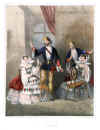 |
|
FLUTE:1774. Hipkins. ‘TWO DOUBLE FLAGEOLETS, A GERMAN FLUTE AND TWO FLUTES
DOUCES’. Five illustrations of instruments on one page. Chromolithograph with accompanying sheet of text, published by Hipkins 1888 [24242] Full
colour, 32 x 21 cm. £60
|
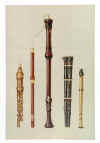 |
FORMES:1775. Bloch, E. ‘THEODOR FORMES’ as
Lohengrin. A romantic opera in three acts by Richard Wagner. Berlin, Eduard Bloch ca. 1860 [24318] Full coloured lithograph, 12 x 15 cm.
£90 |
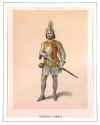 |
FREZZOLINI:1777. Geiger, A. ‘SIGNOR FREZZOLINI’ as Dulcimara in the opera L’Elisir
d’Amore. An opera in two acts by Donizetti. Engraved by Andreas Geiger after Schoeller and published in Wiener Theaterzeitung ca. 1800 [24329] Original coloured copper engraving, 23 x 14 cm. £150
Joseph Frezzolini (1789 - 1861) was a ‘buffo
cantate’ singer of Italian opera. He was the first interpreter of the character of
Dulcamara, a quack-doctor in L'Elisir d'Amore by Gaetano Donizetti, at the Teatro alla
Canobbiana, Milan.
|
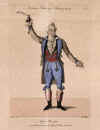 |
|
GILBERT & SULLIVAN:1779. Anonymous. ‘IOLANTHE AT THE SAVOY THEATRE’. Central scene of ‘Fairy invasion of the Palace Yard!’ with smaller vignettes of the Lord Chancellor (George
Grossmith); Strephon (Mr R Temple); Leila (Miss Julie Gwynne); Private Willis (Mr Manners); Iolanthe (Miss Jessie Bond); Phyllis (Miss Braham) and Lords of the Realm. London, 1882 [23958] Wood engraving, 32 x 23 cm.
Full hand colour. £75
"Iolanthe", or "The Peer and the Peri", opened at the Savoy Theatre on November 25, 1882. |
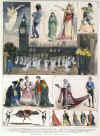 |
|
GILBERT & SULLIVAN:1780. Taylor, R. ‘SKETCHES FROM “THE GONDOLIERS” AT THE SAVOY THEATRE’. Various scenes from the Opera. London, 1889 [23959] Wood engraving, 32 x 23 cm.
Full hand colour. £75
The Gondoliers or, The King of Barataria, is a Savoy Opera, with music by Arthur Sullivan and libretto by W. S. Gilbert. It premiered at the Savoy Theatre on 7 December 1889 and ran for a very successful 554 performances. |
 |
|
GILBERT & SULLIVAN:1781. Salmon, B. ‘THE YEOMEN OF THE GUARD’. ‘After nine years: The Revival’. Drawn by Balliol Salmon. Central scene at the Tower of London with Phoebe, her father and the Jailor, surrounded by small vignettes of the main characters. London, The Graphic 1906 [23960] 32 x 23 cm.
Full hand colour. Excellent condition. £75
The Yeomen of the Guard, or The Merryman and his Maid, is a Savoy Opera, with music by Arthur Sullivan and libretto by W. S. Gilbert. It premiered at the Savoy Theatre on 3 October 1888, and ran for 423 performances. |
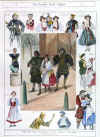 |
|
GOUNOD:1782. Pirodon, E. ‘CHARLES GOUNOD’. Large oval lithograph showing head and shoulders. Eugene Pirodon ca. 1820 [19760] 58 x 47 cm. Tear in lower margin closed. £240
Gounod was born in Paris, the son of a pianist mother and an artist father. Gounod wrote his first opera,
Sapho, in 1851, but had no great theatrical success until Faust (1859), based on the play by Goethe. From 1870 to 1874 Gounod lived in England, becoming the first conductor of what is now the Royal Choral Society. |
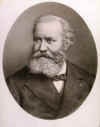 |
|
GOUNOD:1783. Vanity Fair. ‘EMOTIONAL MUSIC’. Full length image of the composer Charles
Gounod. Vincent Day Brooks & Sons 1879 [24269] Chromolithograph, 33 x 19 cm. £60
Charles-François Gounod (1818-93) was a French composer, best known for his Ave Maria as well as his operas Faust and Roméo et
Juliette. He was made a Grand Officer of the Légion d'honneur in July 1888. In 1893, apparently shortly after he had put the finishing touches to a requiem written for his grandson, he died in Saint-Cloud, France. |
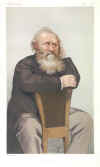 |
|
GRISI:1784. Aubert. ‘JULIA GRISI’. Head to waist portrait from the series: ‘Galerie de la
Presse, de la Literature et des Beaux Arte’. Paris ca. 1840 [24303] Uncoloured steel engraving, 18 x 14 cm. £90
Giulia Grisi (1811-69) was an Italian opera singer. Giulia was trained to a musical career, and made her stage debut as Emma in Rossini's Zelmira in Bologna in 1828. Rossini and Bellini both took an interest in her, and at Milan she was the first to play the part of Adalgisa in Bellini's Norma, in which Giuditta Pasta took the title role. Grisi appeared in Paris in 1832, as Semiramide in Rossini's opera, and had a great success; and in 1834 she appeared in London, making her debut as Ninetta in La gazza
ladra. In 1842, Donizetti wrote the parts of Norina and Ernesto in Don Pasquale for Grisi and Giovanni Matteo De Candia, usually known by his stage-name of Mario, who was to become the love of her life. |
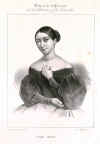 |
|
GRISI:1785. Heath, Ch. ‘GIULIA GRISI. NORMA’ in the opera of the same name by
Bellini. Charles Heath, London 1845 [24355] Uncoloured steel engraving with decorative border from the ‘Beauties of the Opera & Ballet’ edited by Charles Heath. 22 x 16 cm. £100
Giulia Grisi (1811-69) was an Italian opera singer. Giulia was trained to a musical career, and made her stage debut as Emma in Rossini's Zelmira in Bologna in 1828. Rossini and Bellini both took an interest in her, and at Milan she was the first to play the part of Adalgisa in Bellini's Norma, in which Giuditta Pasta took the title role. Grisi appeared in Paris in 1832, as Semiramide in Rossini's opera, and had a great success; and in 1834 she appeared in London, making her debut as Ninetta in La gazza
ladra. In 1842, Donizetti wrote the parts of Norina and Ernesto in Don Pasquale for Grisi and Giovanni Matteo De Candia, usually known by his stage-name of Mario, who was to become the love of her life. |
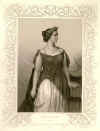 |
|
GUITAR:1786. Hipkins. ‘GUITAR’. Front and rear views of the Stradivari guitar built in Cremona in 1680. Chromolithograph with accompanying sheet of text, published by Hipkins in London 1888 [19766] 32 x 21 cm. £90
Antonio Stradivari (1644-1737), famous Italian violin-maker. ‘It has been supposed that this might have been the only guitar made by the illustrious violin-maker’. |
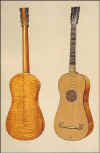 |
|
GUITAR:1787. Hipkins. ‘GUITAR’. Front and back images of the Spanish Guitar. This particular instrument belonging to the Museum of Science and Art in Edinburgh, has been selected on account of it’s great beauty of decoration. It is ornamented with inlaid ivory plaques, with engraved figures of decorative subjects let into the finger-board. There is a mother of pearl vase beneath the bridge upon the sound-board, as well as one near the juntion of the finger -board. The back is of ebony and ivory, the reverse of the neck and head being gracefully incised. Chromolithograph with accompanying sheet of text, published in London by Hipkins 1888 [23994] 32 x 21 cm. £75
|
 |
JACHMANN-WAGNER:1789. Bloch, E. ‘JOHANNA
JACHMANN-WAGNER’ as Ortrud in the opera Lohengrin. A romantic opera in three acts from Richard Wagner. Berlin, Eduard Bloch ca. 1860 [24319] Full coloured lithograph, 12 x 15 cm. £120
Johanna
Jachmann-Wagner or Johanna Wagner (1826-94) was a mezzo-soprano singer, tragédienne in theatrical drama, and teacher of singing and theatrical performance who won great distinction in Europe during the third quarter of the 19th century. She was a niece of the composer Richard Wagner and was the original performer, and in some respects the inspiration, of the character of Elisabeth in Tannhäuser. She was also the original intended performer of Brünnhild in Der Ring des
Nibelungen, but in the event assumed other roles. |
 |
|
KUBELIK:1790. Vanity Fair. ‘KUBELIK’. The famous violinist. Full length portrait, with violin. Vincent Brookes Day & Sons 1903 [23997] Chromolithograph. 34 x 20cms. £60
Jan Kubelík (1880-1940) was a Czech violinist and composer. He was born in Prague. After great success following his debut in Vienna, and in London (where he first appeared at a Hans Richter concert in 1900), Kubelík toured the USA in 1901 for the first time. He made his first appearance for the Royal Philharmonic Society, London in the season of 1901-2, and in 1902 was awarded the Society's Gold Medal. In 1902 he brought the Czech Philharmonic Orchestra to London. In his personal life, in 1903 he married countess Marianne Czáky-Szell, with whom he had eight children, five violinist daughters and three sons, among them conductor Rafael Kubelík. |
 |
|
LABLACHE:1791. Lacauchie, A. ‘LABLACHE’. Full length image of the singer in costume from the opera ‘Othello’. From Galerie des Artistes Dramatiques de Paris. Paris ca. 1840 [24290] Uncoloured lithograph by Rigo
Freres, 25 x 16 cm. £100
Luigi Lablache (1794-1858), Italian operatic bass admired for his musicianship and acting. He had great success in London and Paris as Geronimo in Domenico Cimarosa’s Il matrimonio segreto (The Secret Marriage). In 1836 he lived in London, where with Giulia
Grisi, Giovanni Mario, and Antonio Tamburini he was part of the celebrated quartet of singers for whom Gaetano Donizetti wrote his Don Pasquale. He was admired by contemporary composers, among them Franz Schubert, who wrote songs for him. |
 |
|
LABLACHE:1792. Aubert. ‘LABLACHE’. Head & shoulder portrait from the series ‘Galerie de la
Presse, de la Literature et des Beaux Arte’. Paris ca. 1840 [24300] Uncoloured steel engraving, 18 x 14 cm. £75
Luigi Lablache (1794-1858), Italian operatic bass admired for his musicianship and acting. He had great success in London and Paris as Geronimo in Domenico Cimarosa’s Il matrimonio segreto (The Secret Marriage). In 1836 he lived in London, where with Giulia
Grisi, Giovanni Mario, and Antonio Tamburini he was part of the celebrated quartet of singers for whom Gaetano Donizetti wrote his Don Pasquale. He was admired by contemporary composers, among them Franz Schubert, who wrote songs for him. |
 |
|
LIND:1794. Kammerer, Th. ‘JENNY LIND’. Three quarter length portrait of the famous ‘Swedish Nightingale’ by Th.
Kammerer. Mey & Widmeyer, Munich ca. 1840 [24494] Uncoloured lithograph, 36 x 27 cm. £120
Lind became famous after her performance in Der Freischütz in Sweden in 1838. After this, she was in great demand throughout Sweden and the rest of Europe for a decade. After three acclaimed seasons in London, she was invited to America by P. T. Barnum, where she gave 93 concerts. |
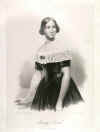 |
|
LIND:1795. Jefferys, Ch. ‘THE SONGS IN LA FIGLIA DEL
REGGIMENTO’. Full length image of Jenny Lind in soldiers uniform. Music cover only (without music). Charles Jefferys, London ca 1850 [26541] 32 x 23 cm. Full colour lithograph. Excellent condition. £120
|
 |
LIND:1796. Payne, A.H. ‘JENNY LIND ALS TOCHTER DES REGIMENTS’. Full length image of Jenny Lind in soldiers uniform. Leipzig, ca 1855 [26630] Uncoloured steel engraving, 24 x 16 cm. £120
Johanna Maria Lind (1820-87), better known as Jenny Lind, was a Swedish opera singer, often known as the "Swedish Nightingale" |
 |
|
MARIO:1798. Aubert. ‘MARIO DE CANDIA’. Head to waist portrait from the series ‘Galerie de la
Presse...’. Paris ca. 1840 [24306] 18 x 14 cm. Uncoloured lithograph. Excellent condition. £90
Mario (1810-83) was an Italian opera singer, considered to be the most famous tenor of the 19th century. His real name and hereditary title was cavaliere nobile ("noble knight") don Giovanni Matteo de Candia. Born in
Cagliari, Mario came from a noble Sicilian family. He made his operatic debut in Paris in 1838, as the hero of Meyerbeer's Robert le
Diable. In 1839, he joined the Théâtre Italien, which included on its roster of artists such celebrated singers as Maria
Malibran, Henriette Sontag, Fanny Tacchinardi Persiani, Giulia Grisi, Giovanni Battista
Rubini, Antonio Tamburini and Luigi Lablache. His initial appearance with this company was in the role of Nemorino in Donizetti's L'elisir
d'amore. London heard him for the first time during the course of that same year. |
 |
|
MASCAGNI:1799. Vanity Fair. ‘CAVALLERIA
RUSTICANA’. Full length image of the composer Pietro Mascagni. Vincent Day Brooks & Sons 1893 [24261] Chromolithograph, 33 x 19 cm. £120
Pietro Mascagni (1863-1945) is one of the most important Italian composers of the turn of the 20th century. The formidable success of his first masterpiece in 1890, Cavalleria
Rusticana, unfortunately eluded many of his following works. Mascagni however wrote 15 operas, an operetta, several beautiful orchestral and vocal works, as well as songs and piano music. He enjoyed amazing operatic successes during his lifetime, and at the same time pursued a very successful career of conductor. |
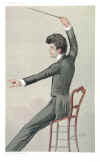 |
|
MUCK:1802. Vanity Fair. ‘WAGNERIAN OPERA’. Full length image of the conductor Dr Carl Muck. Vincent Day Brooks & Sons 1899 [24253] Chromolithograph, 33 x 19 cm. £60
Karl Muck (1859-1940) was a German conductor. Muck earned a Ph.D. in classical philolology at Heidelberg. He began conducting in 1884 and led orchestras in Zurich,
Brno, Salzburg, Graz, and Prague. In 1892 he began conducting the Royal Opera in Berlin, where he remained until 1912. Along the way he also conducted at the Wagner Festival in Bayreuth and also worked with the Vienna Philharmonic. He became music director of the Boston Symphony Orchestra in 1912. He was considered a modern, adventurous conductor and was responsible for leading the orchestra in historic recordings for the Victor Talking Machine Company in Camden, New Jersey. |
 |
|
NIEMANN:1803. Jaeger. ‘ALBERT NIEMANN’. Half length portrait by Jäger. Berlin, A. Hölzer ca. 1860 [26597] 27 x 21 cm. Tinted lithograph in oval form. £100
Albert Wilhelm Karl Niemann (1831-1917) was a leading German tenor opera singer especially associated with the operas of Richard Wagner. He gave important premieres in France, Germany, England and the United States, and played Siegmund in the first complete
(Bayreuth 1876) production of Der Ring des Nibelungen. |
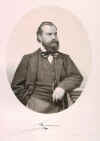 |
|
OFFENBACH:1804. Cheret, J. ‘LES BRIGANDS’. Illustrations for the opera by Jacques Offenbach at the Théatre de la Gaité in Paris. Jules Cheret, Paris ca 1870 [26639] 28 x 22 cm. Full colour lithograph. Excellent condition. £90
Jacques Offenbach (1819-80), German, later French, composer and conductor. - Jules Chéret (1836-1933), French painter, designer and lithographer. |
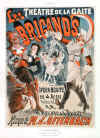 |
|
OPERA HOUSE:1805. Rowlandson, Th. ‘DOCTOR SYNTAX AT COVENT GARDEN THEATRE’. Drawn and etched by Thomas Rowlandson ca. 1820 [25744] Full colour copper engraving, 11 x 18 cm. £60
|
 |
OPERA HOUSE:1806. Anonymous. ‘JULLIEN’S BAL MASQUE’. Interior scene at the Royal Opera House Covent Garden. Anonymous ca. 1858 [25742] Full colour lithograph, with gold highlights. 32 x 24 cm. £150
|
 |
OPERA HOUSE:1807. Anonymous. ‘JULLIEN’S CONCERTS’. Interior scene at the Royal Opera House Covent Garden. Anonymous ca. 1858 [25743] Full colour lithograph, with gold highlights. 32 x 24 cm. £150
|
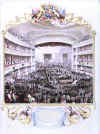 |
PERSIANI:1808. Lacauchie, A. ‘PERSIANI’. Full length image of Fanny Persiani in the role of Adina from the opera L’Elisir D’Amore by Donizetti. From Galerie des Artistes Dramatiques de Paris ca. 1840 [24297] Uncoloured lithograph by Alexandre
Lacauchie, 25 x 16 cm. £90
Fanny Persiani was the second daughter of the tenor
Tacchinardi, born in Rome October 4, 1818. She had a voice of immense range, though somewhat lacking in sweetness and flexibility, defects which she subsequently overcame by study and practice. In 1830 she married Joseph
Persiani. One of the most important events of her early career was her association, in 1834, at the San Carlo, Naples, with
Duprez, Caselli, and Lablache, in a performance of ‘Lucia Di Lammermoor’. |
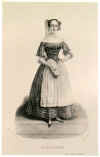 |
|
ROSSINI:1809. Masson. ‘ROSSINI’. Half length portrait. Paris ca. 1850 [24727] Uncoloured engraving,19 x 15 cm. £120
Gioacchino Antonio Rossini (1792-1868) was a popular Italian composer who wrote 39 operas as well as sacred music and chamber music. His best known works include Il Barbiere di Siviglia (The Barber of Seville), La
Cenerentola, La Gazza Ladra (The Thieving Magpie) and Guillaume Tell (William Tell). |
 |
|
ROSSINI:1810. Mode, G. ‘TELL’. Unsophisticated representations of opera scenes from Rossini’s opera William Tell, the costumes copied after those used in actual performances. G. Mode, Berlin ca. 1890 [26670] 19 x 27 cm. Full colour chromolithograph. £90
|
 |
RUBINI:1811. Lacauchie, A. ‘RUBINI’. Full length image of the famous tenor Giovanni Battista
Rubini, in costume, in the role of ‘Arturo’ from I Puritani, an opera by
Bellini. From Galerie des Artistes Dramatiques de Paris. Paris ca. 1840 [24287] Uncoloured lithograph by Rigo
Freres, 25 x 16 cm. £120
Giovanni Battista Rubini (1794-1854) was an Italian tenor, as famous in his time as Enrico Caruso in a later day. His ringing and expressive coloratura dexterity in the highest register of his voice, the
tenorino, inspired the writing of operatic roles which today are almost impossible to cast. As a singer Rubini was the major early exponent of the Romantic style of Vincenzo Bellini and Gaetano Donizetti. Rubini is remembered as an extraordinary bel canto singer, one of the most famous singers in Europe in the 1830s and 40s. |
 |
|
RUBINI:1812. Aubert. ‘RUBINI’. Head & shoulder portrait from the series: ‘Galerie de la
Presse, de la Literature et des Beaux Arte’. Paris ca. 1840 [24310] Uncoloured steel engraving, 18 x 14 cm. £90
Giovanni Battista Rubini (1794-1854) was an Italian tenor, as famous in his time as Enrico Caruso in a later day. His ringing and expressive coloratura dexterity in the highest register of his voice, the
tenorino, inspired the writing of operatic roles which today are almost impossible to cast. As a singer Rubini was the major early exponent of the Romantic style of Vincenzo Bellini and Gaetano Donizetti. Rubini is remembered as an extraordinary bel canto singer, one of the most famous singers in Europe in the 1830s and 40s. |
 |
|
SINGING LESSON:1813. Anon. ‘CHEST FORWARD, TOES OUT’. A humorous scene: A singing teacher, holding a violin, giving instructions to three pupils, a short banjo player and two aspiring singers. J. Knight, London ca 1820 [26709] Uncoloured lithograph, 14 x 21 cm. £90
|
 |
SONTAG:1814. Heath, Ch. ‘SONTAG’ as Donna Anna in the opera Don Giovanni by Mozart. Engraved by H. Robinson. Charles Heath, London ca. 1845 [24356] 22 x 16 cm. Uncoloured steel engraving with decorative border from ‘Beauties of the Opera & Ballet’ edited by Charles Heath. £75
Henriette Sontag (1806-54), German soprano. |
 |
|
STAUDIGL - PISCHEK:1815. Wiener Theaterzeitung. ‘HERR STAUDIGL UND HERR
PISCHEK’ in the well known duet from I Puritani, an opera by Bellini. Vienna ca. 1800 [24331] Original coloured copper engraving, 23 x 14 cm. £90
|
 |
STEPHENS:1816. Reynolds, S. W. ‘MISS STEPHENS, AS SUSANNA IN THE MARRIAGE OF
FIGARO’. Miss [Catherine] Stephens dressed as Susanna in ‘The Marriage of
Figaro’. She first performed this roll in 1819, but judging by the slightly lower and fitted bodice of the gown, this portrait was painted in 1825 before she toured England in this production. Figaro was played by the actor John Liston. W. Sams, London 1825 [26576] 37 x 27 cm. Black & white mezzotint. Excellent condition. £240
From a painting by Henry
Fradelle, engraved by Samuel William Reynolds. - Catherine Stephens (1794-1882), English soprano and actress. |
 |
|
STRAUSS:1817. Groh, J. ‘JOHANN STRAUSS’. Elegant portrait of the famous composer of operetta by Jacob Groh ca. 1880 [19761] 40 x 30 cm.
Uncoloured. Excellent condition. £240
|
 |
TADOLINI:1818. Geiger, A. ‘SIGNORA TADOLINI’ as Adina in the opera L’Elisir
d’Amore, an opera in two acts by Donizetti. Engraved by Andreas Geiger after M. Kirn and published in Wiener Theaterzeitung.Vienna ca. 1800 [24330] Original coloured copper engraving, 23 x 14 cm. £240
Eugenia Tadolini (née
Savorani) (1809-72) was an Italian operatic soprano. Admired for the beauty of her voice and stage presence, she was one of Donizetti's favourite singers. During her career she created over 20 leading roles, including the title roles in Donizetti's Linda di Chamounix and Maria di Rohan and Verdi's
Alzira. She was born in Forlì and studied music there and in Bologna before making her debut in Florence in 1828. She sang in all of Italy's leading opera houses, as well as in Paris, Vienna, and London before retiring from the stage in 1852. |
 |
|
TADOLINI - RONCONI:1819. Wiener Theaterzeitung. ‘Signorina TADOLINI ‘as Maria, ‘Signor
RONCONI’ as Chevereuse and ‘Signor GUASCO’ as Chalais, in the opera Maria di Rohan from Donizetti. Vienna ca. 1800 [24337] Original coloured copper engraving, 27 x 21 cm. £120
|
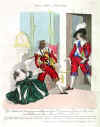 |
TAMBURINI:1820. Lacauchie, A. ‘TAMBURINI’. Full length image of the tenor in costume, in the role of ‘Don Giovanni’. From Galerie des Artistes Dramatiques de Paris. Paris ca. 1840 [24288] Uncoloured lithograph by Rigo
Freres, 25 x 16 cm. £120
Antonio Tamburini (1800-76), Italian baritone. In Paris and London he was successful as an interpreter of Mozart, Rossini, Bellini and Donizetti, creating the parts of Ernesto in Bellini's Il pirata (1827), Valdeburgo in La straniera (1829), Sir Richard Forth in I puritani (1835) and Israele in Donizetti's Marino Faliero (1835). His extreme popularity in London is attested by the ‘Tamburini riots’ of 1840. |
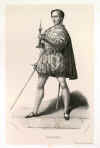 |
|
TAMBURINI:1821. Aubert. ‘TAMBURINI’. Head & shoulder portrait from the series: ‘Galerie de la
Presse, de la Literature et des Beaux Arte’. Paris ca. 1840 [24311] Uncoloured steel engraving, 18 x 14 cm. £90
Antonio Tamburini (1800-76), Italian baritone. In Paris and London he was successful as an interpreter of Mozart, Rossini, Bellini and Donizetti, creating the parts of Ernesto in Bellini's Il pirata (1827), Valdeburgo in La straniera (1829), Sir Richard Forth in I puritani (1835) and Israele in Donizetti's Marino Faliero (1835). His extreme popularity in London is attested by the ‘Tamburini riots’ of 1840. |
 |
TREFFZ:1821A. Brandard, J. ‘MADLLE. JETTY TREFFZ’. Full length portrait of Henrietta Treffz in costume as ‘Arline’ in ‘The Bohemian Girl’, composed by Michael William
Balfe. Printed in colours by M. &. N. Hanhart ca. 1850 [28153] 30 x 23 cm. Full colour lithograph. Small marginal tear repaired, otherwise very good condition. £120
Henrietta "Jetty" Treffz was best known as the first wife of Johann Strauss II and a well-known mezzo-soprano, appearing in England in 1849 to great acclaim. |
 |
|
TROMBONE:1822. Anonymous. (TROMBONE). An unusual and scarce engraving of a man playing the Trombone. Johanning & Co, London ca 1820 [26706] Uncoloured lithograph, 17 x 10, with wide borders. £120
|
 |
|
VERDI:1823. Hanhart, M. & N. ‘LUISA MILLER’. Scene
from the opera by Giuseppe Verdi, probably taken from the first London
performance at Her Majesty’s Theatre with Marietta Piccolomini and Antonio
Giugliemi. Mounted, with insert of ‘Luisa Miller’ below image. M. & N. Hanhart ca. 1858
[27958]
25 x 20 cm. Coloured lithograph. £250
Verdi’s
three-act opera "Luisa Miller," based on a play by Schiller,
"Kabale und Liebe" (Love and Intrigue), was first performed at the
Teatro San Carlo in Naples in 1849. It appears to have been Verdi’s first real
success since "Ernani" and to have led up to that achieved by
"Rigoletto" a year later, and to the successes of "Il
Trovatore" and "La Traviata." |
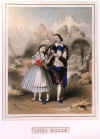 |
VERDI:1824. Anonymous. ‘LUISA MILLER’.
Scene from the opera by Giuseppe Verdi, first produced in Naples in
1849, with Marietta Gazzaniga, Settimio Malvezzi, Achille De Bassini,
Teresa Salandri and conducted by Verdi himself. This lithograph is
probably inspired by the first performance at Sadler’s Wells Theatre,
London in 1858. M. & N. Hanhart ca. 1858 [24008]
26 x
20 cm. Full hand colour. Excellent condition. £225
Giuseppe
Fortunino Francesco Verdi, born: October 9, 1813 – died January 27,
1901. He was an Italian Romantic composer, mainly of opera and was one
of the most influential composers of the 19th century. |
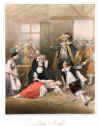 |
|
VERDI:1825. Anonymous. ‘SCENE FROM ‘DON CARLOS’, AT THE ROYAL ITALIAN OPERA’. Illustrated London News 1867 [24219] 24 x 33 cm.
Full hand colour. Excellent condition. £90
Don Carlos, originally produced at the Grand Opéra, Paris, March 11, 1867 during the Universal Exposition, was the last opera composed by Verdi before he took the musical world by storm with ‘Aida’. The work is in five acts (a later version in four acts), the libretto, by Méry and du
Locle, having been reduced from Schiller’s tragedy of the same title. |
 |
|
VERDI:1827. Mode, G. ‘RIGOLETTO’. Unsophisticated representations of opera scenes from Verdi’s opera
Rigoletto, the costumes copied after those used in actual performances. G. Mode, Berlin ca. 1890 [26674] 19 x 27 cm. Full colour chromolithograph. £90
|
 |
VIENNA:1828. Anonymous. ‘HOF - OPER’. The famous Opera House in Vienna. Two views, one of the outside and one of the inside of the theatre. Anonymous ca. 1890 [24121] Two chromolithographs, 9 x 15 cm each.
£90
|
 |
VIOLIN:1829. Vanity Fair. ‘FIRST VIOLIN’. The Duke of Edinburgh. Vincent Day Brooks & Sons 1874 [24264] Chromolithograph, 33 x 19 cm. £60
Alfred, Duke of Saxe-Coburg and Gotha (Alfred Ernest Albert, 1844-1900) was the third Duke of Saxe-Coburg and Gotha reigning between 1893 and 1900. He was also a member of the British Royal Family, the second son and fourth child of Queen Victoria and Prince Albert of Saxe-Coburg and
Gotha. He was created Duke of Edinburgh, Earl of Kent and Earl of Ulster in the peerage of the United Kingdom in1866. |
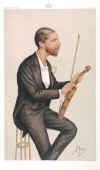 |
|
VIOLIN PLAYER:1831. Pieter Van Slingelant. 'DER
VIOLINSPIELER'. A violin player standing at the window tuning his instrument. Etching by L. Kuhn, ca. 1880 [24220] 24 x 19 cms.
Uncoloured. Excellent condition. £165
|
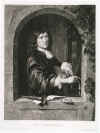 |
WAGNER:1832. Vanity Fair. ‘THE MUSIC OF THE FUTURE’. Full length image of the composer Richard Wagner. Vincent Day Brooks & Sons 1877 [24251] Chromolithograph, 33 x 19 cm.
£240
Richard Wagner (1813-1883) was a German opera composer and key figure in the development of late Romantic music. He stretched the tonal systems of his day, using chromaticism for dramatic effect. Wagner also introduced the concept of the leitmotiv in his operatic plot development, a recurring musical theme associated with a particular person, place, or idea. |
 |
|
WAGNER:1833. Anonymous. ‘DAS RHEINGOLD’. Art Nouveau illustrated title page for a piano score in gold and green showing the
Rhinemaidens. B. Schott’s Söhne, Mainz 1899 [26633] 19 x 17 cm. Excellent condition. £90
|
 |
|